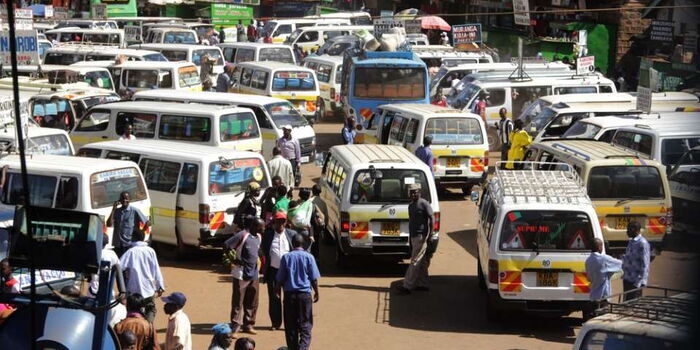The Kenya National Bureau of Statistics (KNBS) has announced a noticeable increase in transport fares and other living costs across the country for the month of August, raising concern among many Kenyans who already feel the pressure of the rising cost of living.
In its Consumer Price Indices and Inflation Rates Report published on August 29, KNBS highlighted that the cost of passenger transport rose significantly during the month.
The sharpest increase was recorded along the busy Mombasa–Nairobi route, where bus and matatu fares went up by 15.4 per cent. This means that travelers on this route are now paying considerably more for the same journey compared to the previous month.
The report further showed that even short-distance transport costs rose, with fares for three-wheelers, popularly known as tuk-tuks, increasing by 1.5 per cent.
This comes despite the Energy and Petroleum Regulatory Authority (EPRA) announcing a small drop in the price of petrol by 0.5 per cent during August, while diesel prices remained unchanged. At the same time, KNBS reported that vehicle insurance premiums also edged upwards, rising slightly by 0.2 per cent.
Apart from transport, households are also facing higher charges for television subscription services. KNBS indicated that fees for private pay-TV platforms such as DSTV went up by 1.5 per cent. For many families, this adds to the growing burden of monthly expenses.
The report also noted rising costs in the hospitality sector. Prices in restaurants, cafés, and hotels all increased, though at a slower pace. According to KNBS, takeaway and café meals rose by 0.3 per cent, beverages in hotels and restaurants went up by 0.3 per cent, while lodging and guest house accommodation registered a 0.2 per cent rise.
Consumers also felt the pinch in personal care and basic household goods. Items such as body lotion, toilet soap, and tissue paper all became more expensive, with prices rising by 0.2 per cent, 0.4 per cent, and 1.6 per cent respectively.
When it comes to food, the agency reported that vegetable prices saw a sharp climb. Cabbages recorded the highest jump at 6.3 per cent, followed by carrots at 2.4 per cent, sukuma wiki at 1.9 per cent, and tomatoes at 1.2 per cent. For most Kenyan households, these vegetables form part of the daily diet, making the increase especially worrying.
Goods and Services That Became Cheaper
Not all prices went up during August. KNBS highlighted several essential food items that recorded slight declines.
Fresh unpackaged cow milk dropped by 0.9 per cent, fortified maize flour by 1.7 per cent, and sifted maize flour by 1.5 per cent. Prices of beans fell by 0.7 per cent, loose maize grain by 0.4 per cent, and oranges by 0.7 per cent.
A more encouraging trend was noted in energy costs. Electricity charges dropped significantly, with households using 50kWh paying 2.3 per cent less, while those consuming 200kWh saw a 2.1 per cent decline.
Additionally, the index for furnishings, household equipment, and routine household maintenance showed a slight overall decrease of 0.2 per cent, signaling some relief for families purchasing household items.
Join Government Official WhatsApp Channel To Stay Updated On time
https://whatsapp.com/channel/0029VaWT5gSGufImU8R0DO30


